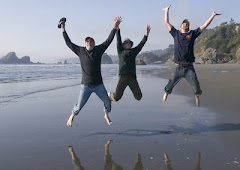The U.S. Electoral College chose a president in 2016 who
is a horrible human being. His main motivation in running for president was
opportunism. His insecurities manifest in bullying and power plays. He treats
women like sexual objects and second-class citizens. He thinks the police
aren’t violent enough. He and his father discriminated against people of color
in their real estate deals. He is homophobic. He is stunningly ignorant and
inarticulate. He doesn’t know what the word empathy means.
That almost 62 million people voted for this pathetic person
can’t be ignored. What it says about America can’t be ignored. His
constituencies have been scrutinized, analyzed, dissected, and dialected (I
made up a new word form) by journalists, pundits, academics, liberals, and
radicals until there aren’t many fingers left to point. As I said in a La Jicarita posting, if the white evangelicals “can literally believe in the Bible
they can easily believe in Trump.”
Rich Republicans have every reason to vote for someone who represents the
interests of the 1%. Many rust belt former Democrats were voting against Hilary
Clinton.
But it’s folks in rural America I want
to talk about here. This demographic obviously spills over into the evangelical
and the job-loss categories, but has consistently been a conservative
stronghold in American politics, a bulwark against the elitist urbanites and
coastal liberals who they perceive as the “other.” Already members of the
Republican Party, who else would they vote for? But the niggling question keeps
getting asked, why do they continue to vote against their own self-interest?
I’ve lived in a rural area my entire adult life, but the
distinguishing factor in my rural experience is color: the Hispano and Native
American cultures of northern New Mexico are a very distinct demographic from
the white, rural residents of the Midwest or the south. They may no less
safeguard a land-based livelihood, a culture based on traditional family ties,
and a certain insularity than the folks in the white, rural U.S., but because
they are brown they are also the “other”—to white America in general. They have
lived with discrimination, marginalization, and exploitation as colonial
subjects of white America since the Europeans arrived.
Trump presented himself as the swamp
cleaner and the man of the people who would make America great again. The brown
people of northern New Mexico knew he meant “better for white people.” They’ve
lived with broken promises and lies since the Spanish Conquest and the U.S.
invasion. Unfortunately, they’ve also seen it in their own leaders and
politicians, who established patrón systems to continue the exploitation. But in
the community organizing in which I’ve been involved, their anger and activism
is turned toward the exploiters. White Americans continue to support Trump
because he keeps their anger directed at the exploited. The underpinning racism
in this country cannot be ignored.
How do we combat that racism, which not only Trump embodies but
the libertarian oligarchs like the Koch brothers support with their millions of
dollars and the opportunistic Republican congressional majority embed in policy
and law? The resistance is already there, in full force, and the focus is not
on the conversion of the racists and xenophobes and evangelicals who will no
doubt always be with us. The resistance lies in minority emancipation and the
emergence of a fully realized multicultural society. If the Democratic Party
decides to represent this movement it will survive and morph into something
akin to what we see in other, more progressive societies in Europe. With or without
the Dems, however, the movement continues towards inclusion and equality and
against the bigots: we outnumber them, our young people will replace them, and
eventually (though probably not in my lifetime), the capitalist system will
implode.
